Have you ever thought about punitive damages in injury cases? Ever wonder how they’re given? They’re more than just money for the victim. They serve as a strong legal action. Let’s dive into when and how punitive damages are used.
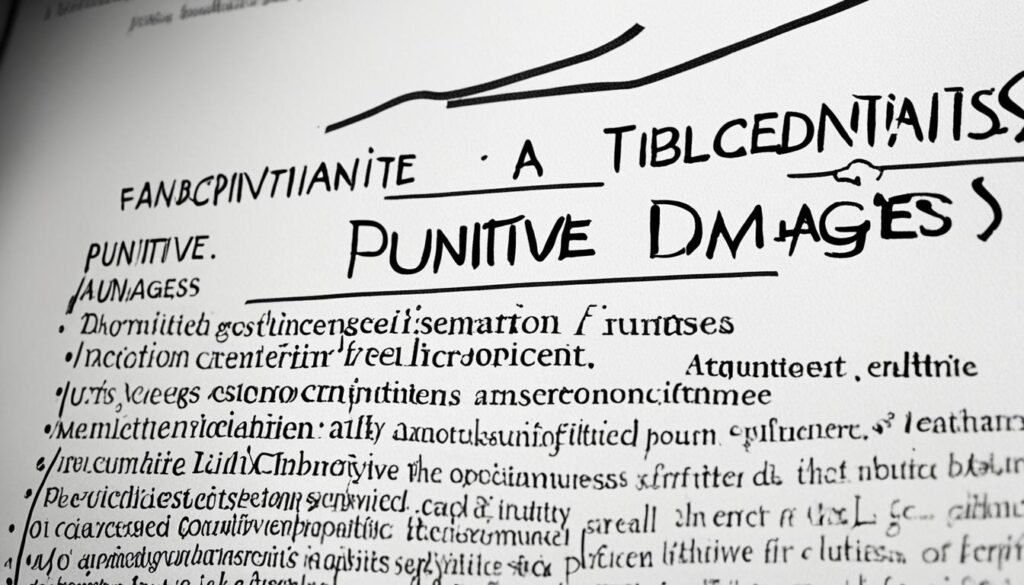
Key Takeaways:
- Punitive damages are awarded in addition to compensatory damages in personal injury cases.
- They are meant to punish the defendant for serious misconduct and act as a deterrent.
- Punitive damages are not awarded frequently and vary by state regulations.
- A personal injury attorney can provide guidance on pursuing punitive damages.
- Understanding the purpose and importance of punitive damages is vital in seeking justice.
Understanding Punitive Damages
Punitive damages are a key part of civil lawsuit awards. They are different from compensatory damages, which pay for the victim’s losses. Punitive damages aim to punish the defendant for bad behavior and stop others from doing the same.
Claiming punitive damages starts with a civil lawsuit. These damages are often in cases like personal injury or medical malpractice. These cases show the defendant meant to harm or was very careless. Still, punitive damages aren’t given for contract breaches, except in special cases.
Punitive damages are about punishment and stopping bad behavior. They make it clear that such actions are not acceptable. They hit the defendant with financial penalties above compensatory damages. This stops them from repeating their behavior and warns others too.
Understanding punitive damages is important. Success in claiming them depends on knowing the law and proving the defendant’s behavior. It helps to work with legal experts. They know how to navigate the legal system and build a strong case.
“Punitive damages serve as a strong deterrent, holding wrongdoers accountable and providing a sense of justice for victims.”
The image below shows how the claims process for punitive damages works:
Punitive Damages Process
| Steps in Pursuing Punitive Damages | Description |
|---|---|
| 1. Consultation with an Attorney | Seeking legal guidance from a personal injury attorney who specializes in punitive damages to evaluate the case’s eligibility. |
| 2. Investigation and Evidence Gathering | Collecting evidence to prove the defendant’s misconduct, such as medical records, accident reports, and witness testimonies. |
| 3. Filing the Lawsuit | Preparing and filing the necessary documents to initiate a civil lawsuit, specifically addressing the claim for punitive damages. |
| 4. Discovery and Depositions | Exchanging information and conducting depositions to uncover additional evidence and strengthen the case. |
| 5. Settlement Negotiation or Trial | Engaging in negotiations with the defendant’s legal team for a fair settlement or proceeding to trial if a resolution cannot be reached. |
| 6. Jury Decision or Judge’s Verdict | The final determination of punitive damages based on the jury’s decision or the judge’s ruling. |
It’s vital to understand the punitive damages claims process in civil lawsuits. Knowing what they are, why they exist, and how to pursue them helps victims seek justice. It ensures wrongdoers are held accountable for their actions.
Punitive Damages vs. Compensatory Damages
In personal injury lawsuits, victims can get money for their injuries in different ways. One way is by asking for compensatory damages. These damages aim to cover both economic and non-economic losses from what the defendant did. Economic losses mean things like medical bills and lost wages. Non-economic losses include pain, emotional upset, and a lower quality of life.
The victim must show the defendant acted below a reasonable person’s standards to get compensatory damages. It has to be proven that the defendant’s lack of care or direct harm caused the victim’s losses. This proof is up to the person who was hurt.
Punitive damages are not the same as compensatory damages. They don’t compensate the victim. Instead, they punish the defendant for very bad actions or carelessness. These damages are meant to stop such behavior from happening again by being a warning.
To get punitive damages, the victim’s side must prove the defendant’s very bad behavior to a court or jury. Proof of intentional harm or extreme negligence has to be presented. But, getting punitive damages is not easy and might need a lawyer’s help.
A lawyer specializing in punitive damages knows a lot about these cases. They fight for the hurt person’s rights. They know how to seek both compensatory and punitive damages. With a lawyer’s support, victims can get a fair outcome that brings justice.

Comparing Punitive Damages and Compensatory Damages
| Punitive Damages | Compensatory Damages |
|---|---|
| Meant to punish the defendant | Meant to compensate the victim |
| Awarded for intentional harm or gross negligence and recklessness | Awarded for quantifiable economic and non-economic losses |
| Not based on specific economic damages | Based on the victim’s actual financial losses |
| Aim to deter similar behavior in the future | Aim to make the victim whole and restore their quality of life |
| Requires proving the defendant’s misconduct | Requires demonstrating the defendant’s liability for the harm suffered |
Factors Influencing Punitive Damages
Several factors influence the size of a punitive damages award. These components are critical during the decision-making process. They shape the case’s outcome. Knowing them is key for anyone seeking such damages in court.
Intent to Harm
Intent to harm is vital in cases of intentional torts. The defendant plans to cause harm. This intention significantly boosts the chance of getting punitive damages. It shows the defendant’s bad motives and supports the claim for more compensation.
Gross Negligence or Recklessness
Gross negligence or recklessness is more than just being careless. It shows a total lack of concern for the outcomes. When someone acts this way, it shows they don’t care about others’ safety. Courts look at this when deciding on punitive damages.
Severity of Misconduct
The worse the defendant’s actions, the more attention they get. Courts measure how bad the actions were to set the punishment. The more terrible the act, the more likely punitive damages will be given. This highlights the need to show the defendant’s guilt.
Relationship Between Award and Actual Harm
Courts compare the punitive damage to the actual harm. They want the punishment to match the harm caused. This stops awards that are too high or too low. It keeps the legal system fair.
Defendant’s Financial Condition
The defendant’s money situation matters too. Punitive damages should not make them go bankrupt. Courts weigh the defendant’s finances before setting the damages. This makes sure the punishment is fair and the defendant can pay.
Factors like intent to harm, careless actions, the severity of misconduct, harm caused, and the defendant’s finances matter. Courts use these to make fair decisions on punitive damages.
Frequency of Punitive Damages Awards
Punitive damages are not often awarded, despite what many think. A US Department of Justice report shows that plaintiffs seek punitive damages less than compensatory ones. When they do seek them, only 30% are successful when they win their case. It’s hard to get punitive damages because you must prove the defendant’s actions were very wrong.
When looking for punitive damages, it’s vital to know how often they’re actually given. Compensatory damages cover the victim’s losses. However, punitive damages punish and deter. But, it’s tough to get them due to the strict proof needed of intentional harm or extreme carelessness.
Talking to an experienced lawyer is crucial if you’re considering punitive damages. They can tell if your case fits punitive damages and guide you accordingly.
Statistics on Pursuit and Prevalence of Punitive Damages Awards
Here are some statistics to show how rare punitive damages awards are:
- In personal injury cases, fewer plaintiffs seek punitive damages than compensatory.
- When plaintiffs win, punitive damages are awarded only 30% of the time.
- The strict proof needed to show very wrong conduct makes getting punitive damages hard.
| Statistic | Percentage |
|---|---|
| Punitive damages pursued in personal injury cases | punitive damages pursuit rate |
| Punitive damages awarded when plaintiffs prevail | prevalence of punitive damages awards |
The statistics underline how seldom punitive damages are awarded. They point out the hurdles victims face in getting these damages. A skilled personal injury attorney is essential to deal with the law successfully.
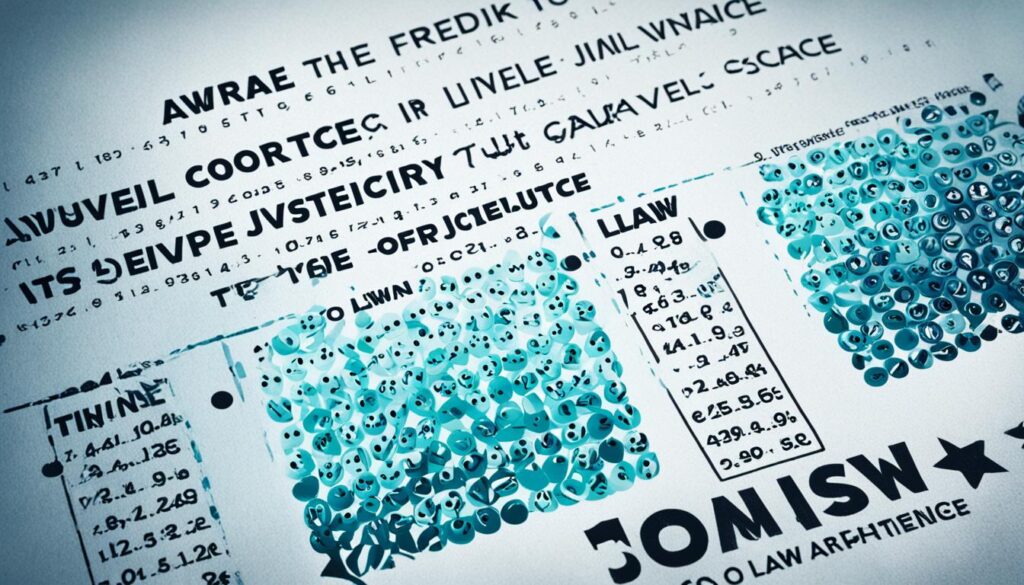
Caps on Punitive Damages
There is no universal cap on punitive damages, as each state sets its own rules. Some states set limits based on a percentage of the defendant’s net worth or a fixed amount. Also, in some places, a plaintiff must share the punitive damages with the state. The U.S. Supreme Court has outlined what factors to consider when deciding on a punitive damages award. These include how bad the defendant’s actions were and the relationship between punitive and actual damages.
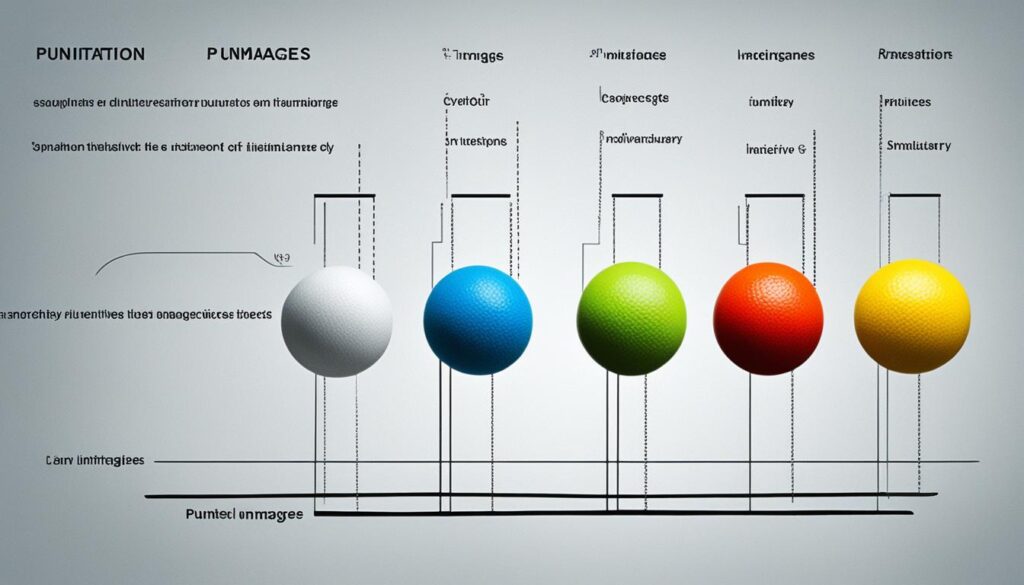
Punitive damages differ by state. The idea behind punitive damages is to punish and deter bad actions. Still, there are caps to keep things fair and stop awards from being too high.
State laws aim to find a middle ground. They compensate the victim while also punishing the offender. Caps help ensure the punishment fits the harm caused.
The specific caps on punitive damages vary. Some states limit them to a percentage of the defendant’s net worth, like 5%. Others set a maximum dollar amount, such as $500,000.
Besides limits on net worth or fixed amounts, some states have split-recovery laws. These laws mean the plaintiff has to share any punitive damages with the state. This helps public funds also support the award, not just the defendant.
The U.S. Supreme Court suggests considering various factors when setting punitive damages. These include the severity of the wrongdoing, the defendant’s reprehensibility, the damages ratio, and how the award compares to similar civil or criminal penalties.
It’s worth noting that, unlike punitive damages, compensatory damages have no caps. These damages cover the real losses the plaintiff has faced.
Taxability of Punitive Damages
In personal injury cases, getting punitive damages can impact your finances. Compensatory damages aren’t taxed, but it’s different for punitive damages. It’s vital to understand their tax status and report them to the IRS correctly.
Generally, compensatory damages don’t affect your income for tax reasons. But, you need to know that punitive damages are taxable. The IRS says to list them as “Other income” on your tax forms.
The tax rules for punitive damages depend on your situation and state laws. Wrongful death claims are an exception, where punitive damages might not be taxed. Always talk to a tax professional or lawyer to get the correct info for your case.
Accuracy in tax reporting is crucial. Not listing punitive damages correctly can cause penalties. Getting advice from a professional is a wise move.
Knowing about the tax details of punitive damages helps in managing a lawsuit’s financial side. With expert advice, people can handle tax laws better and improve their financial situation.
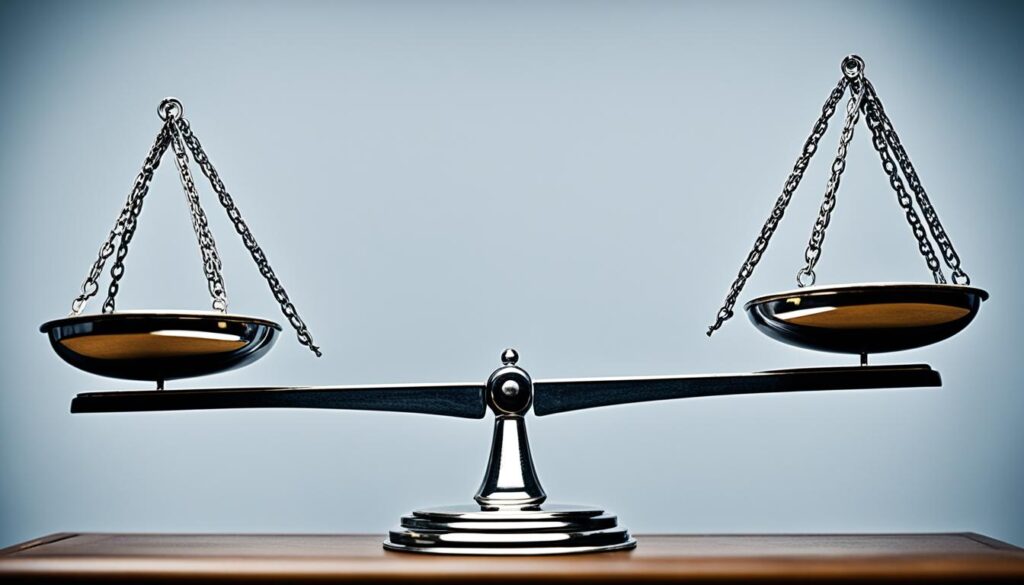
Purpose and Importance of Punitive Damages
Punitive damages are key in the civil justice system. They make wrongdoers accountable for their actions. At the same time, they stop others from doing the same bad things. Even though they are not often given, the possibility of getting punitive damages shows how serious misconduct is. It also acts as a strong warning to keep society safe.
In personal injury cases, victims get compensatory damages to cover their losses. These losses include medical bills, lost earnings, and pain. But punitive damages do more. They aim to serve a bigger purpose by going beyond compensation.
Deterring Misconduct and Promoting Justice
“Punitive damages have two goals: to punish wrongdoers and stop others from doing wrong. They make victims feel justice has been served. Also, they send a clear message that bad behavior is unacceptable.”
Punitive damages do more than just impact finances. By giving large awards, the law aims to prevent people and companies from causing intentional harm or being very careless. This checks their behavior and ensures a safer society for everyone.
Sending a Message against Wrongdoers
“Punitive damages tell wrongdoers that their bad actions have big consequences. It’s not only about making the victim whole. It’s also about making the wrongdoer pay for their bad actions.”
Through punitive damages, the courts make it clear: certain behaviors are unacceptable. They make sure those who act badly face fitting consequences.
Encouraging Corporate Responsibility
“Punitive damages push corporations to put safety, ethics, and the public’s good first. It stresses the need for companies to be responsible and work for the public’s benefit.”
Companies can also face punitive damages. Giving large punitive awards to companies makes them see the need to act responsibly. It drives them to follow and maintain strong safety and ethical standards and to protect their customers.
Punitive damages are extremely important. They are a crucial tool in the civil justice system. They help maintain justice, prevent bad conduct, and protect society from future damages.
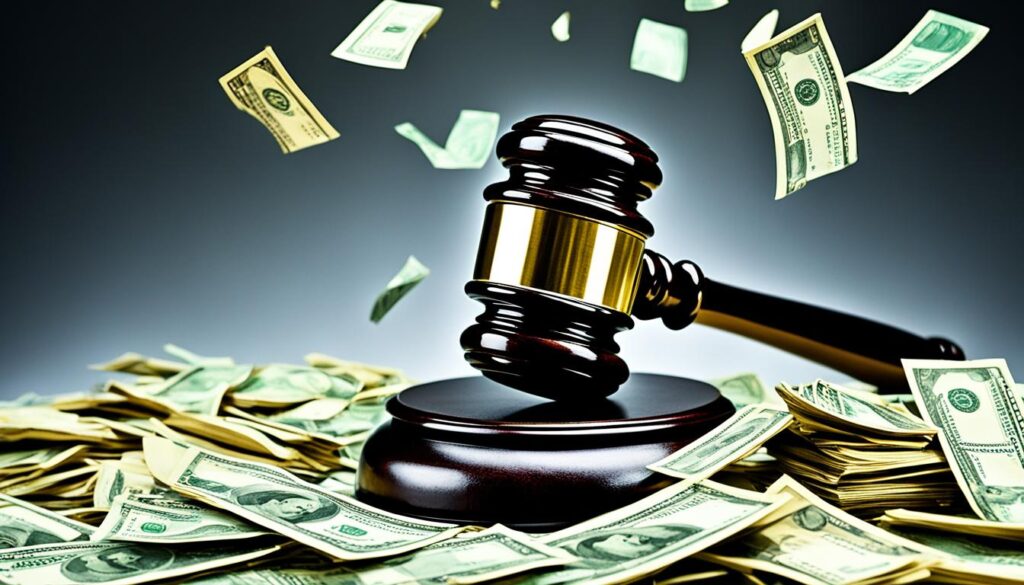
Importance of Legal Representation for Punitive Damages
Seeking punitive damages in an injury case is complex. It requires knowing the legal rules and building a solid case. Consulting with a skilled personal injury attorney is critical. They can guide you through the legal system for the best outcome. They help you see if punitive damages are right, gather proof, and fight for a fair deal.
Consulting a personal injury attorney will greatly impact your case’s result. They know the ins and outs of injury law, especially about punitive damages. They’ll look at your situation carefully to see if pursuing these damages makes sense.
Getting legal guidance for punitive damages means your attorney will collect needed evidence. They might look at medical records, talk to witnesses, and work with experts to make your case stronger. They aim to show the wrongdoer’s bad actions and how you were hurt.
At negotiations or in court, your attorney stands up for you. They clearly show why you need punitive damages, pointing out the wrongdoer’s severe actions. Their experience in talking deals and courtroom know-how are key in getting the justice you deserve.
Without a lawyer, dealing with the legal system is tough. They take care of all the legal steps, deadlines, and paperwork, ensuring your rights are safe. They make sure your case is put forward well.
When it comes to punitive damages, don’t wait too long. There are laws that limit the time to act. Talking to a personal injury lawyer quickly after the incident is vital. It helps save evidence and protect your rights.
To sum up, having a legal representative is crucial in injury cases involving punitive damages. The right lawyer brings knowledge and support, guaranteeing your case is strong and your rights are watched over. With their help, you’re more likely to get a fair settlement or court decision that shows how serious the wrongdoing was.
Seeking Justice through Legal Action
If someone else’s carelessness or intentional wrong hurt you, you have the right to seek justice. By suing for personal injury, you can get money for your losses. You might also get punitive damages to punish the offender.
It’s important to act quickly in these situations. You need to talk to a personal injury lawyer for guidance. They will explain your rights, find evidence, and create a strong case for you. This legal action helps you get closure and compensation. It also makes the wrongdoer face their actions.
Getting justice can happen through a deal or at trial. With a good lawyer, you can face the legal challenges and stand up for your rights. Don’t wait. Act now to protect your future and get the justice you deserve.